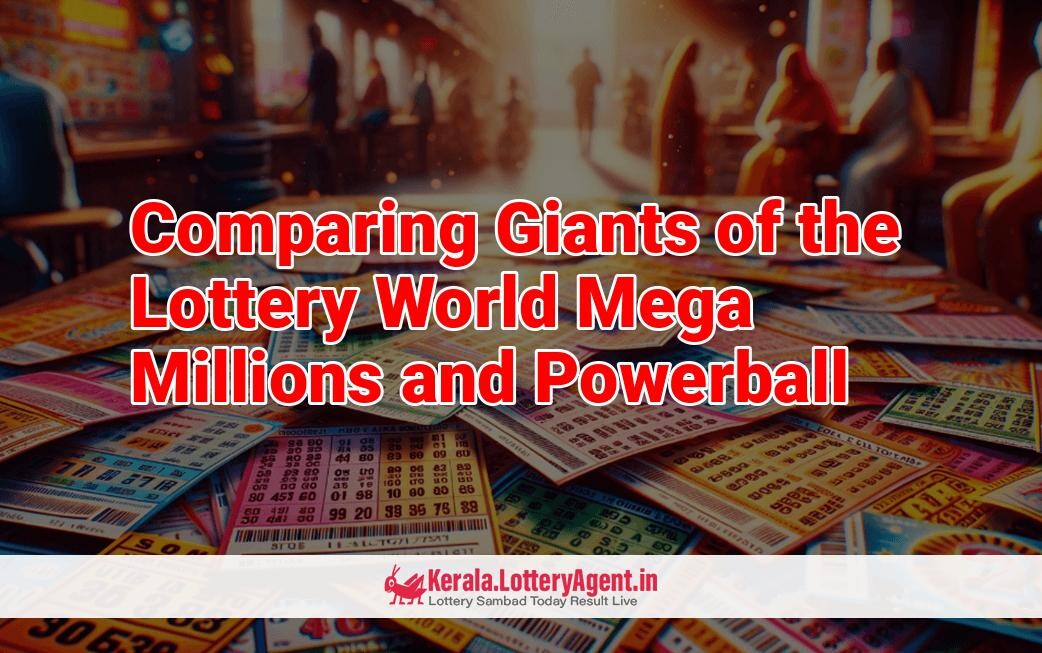
In the realm of lotteries, the allure of instant wealth has captivated millions worldwide, and in the United States, two games lead the pack: Mega Millions and Powerball. As participants dream of life-changing jackpots, we dive into the intricacies of both lotteries to unravel their appeal and delineate their differences, attempting to guide hopeful players toward their favored game.
Mega Millions and Powerball reign supreme as the most illustrious lotteries on a global scale, each with the capacity to grant prizes surpassing hundreds of millions of dollars. Managed by distinct associations, these lotteries offer distinctive experiences crafted to ensnare various lottery enthusiasts.
For novices and lottery veterans alike, choosing between the two can become a head-scratcher. Our analysis will highlight the nuances comprising the jackpot prizes, lottery odds, drawing schedules, multiplier features, and number selection ranges of both Mega Millions and Powerball.
The challenge of seizing the jackpot is steep in both games; Mega Millions presents odds of 1 in 302,575,550, while Powerball’s odds stand marginally more favorable at 1 in 292,201,338. In either case, the extraordinary odds reflect the immense rewards at stake, though secondary prizes provide somewhat more attainable goals with comparable odds in both.
Scrutinizing the odds will uncover that though both have colossal records for payouts, each has its own claim to fame. Powerball’s pinnacle achievement was conferring a staggering $1.586 billion jackpot in January 2016, split amongst three winners. Mega Millions is not far behind in its generosity, having bestowed a monumental $1.537 billion to a single lucky South Carolinian on October 23, 2018, marking its largest singular payout, with the second-largest amounting to $1.05 billion handed to a player in Michigan on January 22, 2021.
Both games set their jackpots at a base of $20 million, with potential roll-overs that can accumulate into staggering sums. The subtle intricacies of the lottery rules are crucial; for Mega Millions, contenders select six numbers from two separate pools, picking five main numbers from a set of 1 to 70 and one Mega Ball from 1 to 25. Powerball requires participants to choose five white balls from 1 to 69 and one Powerball from 1 to 26. A complete match to the numbers drawn is required to hit the jackpot.
Added enticements come in the form of the Megaplier and Power Play, additional options that amplify secondary prizes. Both games feature multipliers that can quintuple secondary winnings, but Powerball presents an extra edge with the potential for a 10-times increment when the jackpot is under $150 million. These enhancements don’t influence the jackpot but can substantially multiply other prize categories. The principal distinction lies in the Megaplier affecting all secondary prizes except the million-dollar tier, capped at $2 million.
Players find themselves at a crossroads when faced with Mega Millions’ and Powerball’s bounteous top secondary prizes, both similar in magnitude. Matching five numbers without the special ball results in a $1 million reward, which could soar to $5 million with Mega Millions’ Megaplier or double with Powerball’s Power Play.
Mega Millions and Powerball can be engaged in 45 states across the U.S., including the District of Columbia and the U.S. Virgin Islands, with notable absences being Nevada, Utah, Alabama, Alaska, and Hawaii.
Despite similarities like starting jackpots and drawing schedules, Mega Millions and Powerball each inhabit a distinctive lottery niche, with their unique blend of gameplay, odds, and rewards. For lottery enthusiasts, the decision becomes less about which is superior and more about which resonates more closely with individual preferences and accessibility. And for those unable to decide, sampling both could lead to an unexpected windfall.
As pressing questions surface regarding the integrity of these lotto giants, rest assured that both Mega Millions and Powerball employ computerized systems that guarantee random number generation, ensuring a fair playing field for all.
Ultimately, the odds slightly lean in favor of Powerball, yet consistency in their procedures and prize structures makes Mega Millions and Powerball virtually indistinguishable to the hopeful dreamers. Wherever you decide to place your hopes, both games beckon with the promise of untold riches, with the winning numbers conveniently accessible on numerous lottery platforms and results pages.
Thus, whether you’re swayed by the Mega Millions or pledge allegiance to Powerball, both lotteries stand ready to possibly transform dreams into reality, presenting uninterrupted opportunities for fortune with each successive draw.











